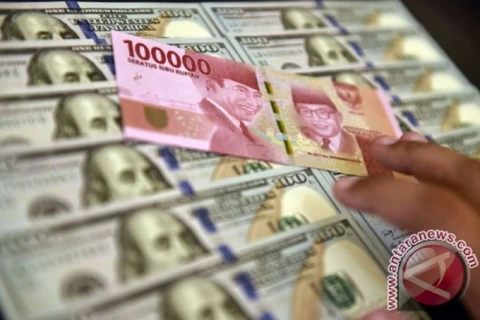Jakarta (VNA) – Fitch Solutions has revised down Indonesia’s economic growth forecast in 2020 as the COVID-19 pandemic places a heavy burden on its state budget and current account and limits Bank Indonesia’s monetary space to support the weakening rupiah.
Accordingly, Fitch Solutions revised down its real gross domestic product (GDP) growth forecast for Indonesia to 4.8 percent this year from 5.1 percent.
The COVID-19 outbreak will weigh down private spending and weaken the external sector amid disruptions to the trade of goods and services, Fitch Solutions said, while the drop in global oil prices could limit the government’s ability to provide a substantial stimulus to bolster the economy.
According to the latest available data, 13 percent of the Indonesian government’s revenue comes directly from the commodities sector. Meanwhile, household spending contributes to more than a half of the country’s GDP.
Indonesia’s economy expanded 5.02 percent last year, down from 5.17 percent in 2018.
Indonesian Finance Minister Sri Mulyani Indrawati on March 18 projected that the country’s economic growth might drop to 4.5 to 4.9 percent in the first quarter, with potential to further plunge in the second quarter, amid weakening economic activities caused by the spread of the COVID-19.
The government has announced two stimulus packages worth trillions of rupiah to cushion the economy and support people’s purchasing power. It is preparing a third stimulus package that will fund the healthcare system.
Fitch Solutions expected Indonesia’s fiscal deficit to widen to 2.8 percent of GDP from the previous forecast of 2.5 percent, as the government is expected to cut spending later this year to keep the deficit within the constitutional limit of 3 percent. It also revised up its forecast for Indonesia’s current account deficit from 2.6 percent to 3 percent of GDP for 2020.
Indonesia has announced 227 confirmed COVID-19 cases, with 19 deaths./.
Accordingly, Fitch Solutions revised down its real gross domestic product (GDP) growth forecast for Indonesia to 4.8 percent this year from 5.1 percent.
The COVID-19 outbreak will weigh down private spending and weaken the external sector amid disruptions to the trade of goods and services, Fitch Solutions said, while the drop in global oil prices could limit the government’s ability to provide a substantial stimulus to bolster the economy.
According to the latest available data, 13 percent of the Indonesian government’s revenue comes directly from the commodities sector. Meanwhile, household spending contributes to more than a half of the country’s GDP.
Indonesia’s economy expanded 5.02 percent last year, down from 5.17 percent in 2018.
Indonesian Finance Minister Sri Mulyani Indrawati on March 18 projected that the country’s economic growth might drop to 4.5 to 4.9 percent in the first quarter, with potential to further plunge in the second quarter, amid weakening economic activities caused by the spread of the COVID-19.
The government has announced two stimulus packages worth trillions of rupiah to cushion the economy and support people’s purchasing power. It is preparing a third stimulus package that will fund the healthcare system.
Fitch Solutions expected Indonesia’s fiscal deficit to widen to 2.8 percent of GDP from the previous forecast of 2.5 percent, as the government is expected to cut spending later this year to keep the deficit within the constitutional limit of 3 percent. It also revised up its forecast for Indonesia’s current account deficit from 2.6 percent to 3 percent of GDP for 2020.
Indonesia has announced 227 confirmed COVID-19 cases, with 19 deaths./.
VNA
























